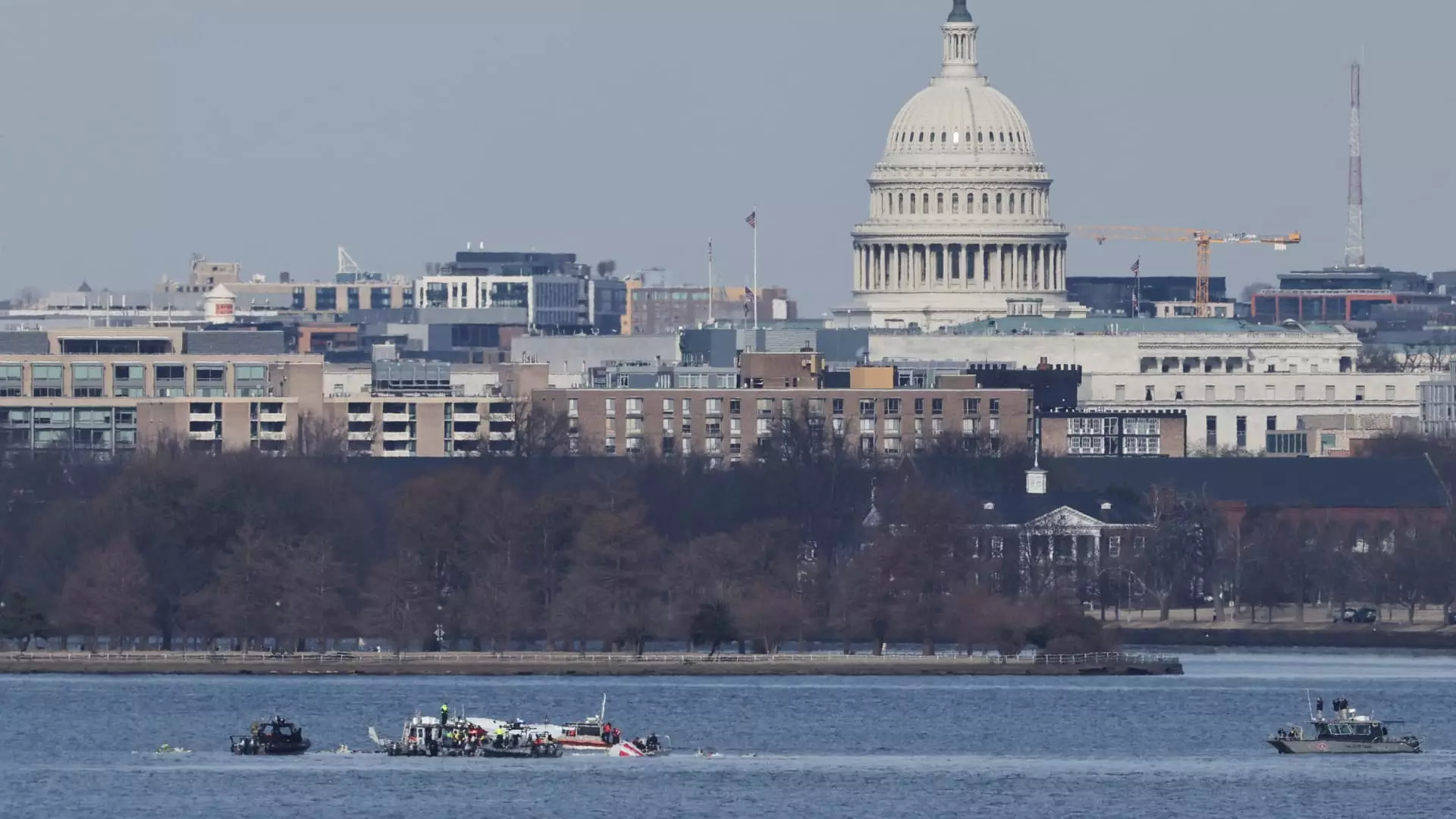In a harrowing incident that has raised numerous questions about aviation safety and regulation, a collision between an Army Black Hawk helicopter and an American Airlines jetliner resulted in the tragic loss of all 64 individuals aboard the flight, along with the three crew members in the helicopter. This catastrophic event occurred on a Wednesday night over the Potomac River, just near the bustling Reagan National Airport in Washington, D.C., marking a stark reminder of the vulnerabilities in the aviation system. As investigators diligently gather evidence and analyze data, it becomes increasingly crucial to understand the potential causes and implications of this disaster.
American Airlines Flight 5342—a Bombardier CRJ-700—was nearing its landing on Runway 33 when it crossed paths with the helicopter that was reportedly engaged in an annual proficiency training mission. At the time of the collision, the jetliner was at a relatively low altitude of approximately 300 feet, which is critical as the Federal Aviation Administration (FAA) mandates that helicopters in specific zones around the nation’s capital must not exceed an altitude of 200 feet. This dovetailing of flight paths raises significant concerns about compliance with established regulations and procedural protocols.
The airspace around Washington, D.C., is notorious for its complexity, with designated helicopter tracks and zones set in place to mitigate risks. National Transportation Safety Board (NTSB) member Todd Inman highlighted this unique environment by stating that helicopters often operate within structured pathways that demand exacting adherence to altitude limitations. The conflicting altitudes at play during this tragic accident prompt a closer examination of regulatory adherence from both military and commercial aviation perspectives.
In the wake of the crash, the FAA swiftly responded by implementing new flight restrictions for helicopters operating in the vicinity of Washington, D.C. While certain exemptions exist for medical emergencies and law enforcement, these changes are indicative of a pressing need to reevaluate safety protocols in such a high-traffic area. The newly established regulations aim to enhance the safety of both civilian and military flights navigating through the nation’s capital.
Statements from officials have brought to light the disconcerting realization that there may have been a mistake regarding the helicopter’s altitude during the incident. Defense Secretary Pete Hegseth remarked on the necessity of further investigations into the “elevation issue,” a statement that underscores the urgency for an exhaustive inquiry into operational errors. The significance of these revelations cannot be overstated; they highlight the necessity for rigorous training and operational discipline, particularly in areas with congested airspace.
The NTSB is spearheading the investigation into the collision, emphasizing the importance of thoroughness in their process. It was confirmed that both the flight data recorder and the cockpit voice recorder from American Airlines Flight 5342 have been recovered. As investigators painstakingly sift through this data, they aim to reconstruct the events leading up to the collision and ascertain the decision-making processes involved.
NTSB Chair Jennifer Homendy articulated the need for accuracy when interpreting the data collected. The agency’s commitment to a rigorous investigative procedure is essential, not only for identifying the direct causes of this tragedy but also for establishing recommendations to prevent similar occurrences in the future. The incident calls for a reassessment of the existing systems and infrastructural frameworks that govern air traffic in such densely populated areas.
As the nation grapples with the implications of this devastating air crash, it becomes painfully clear that thorough accountability must be pursued. The articulation from public figures, including President Donald Trump and Defense Secretary Hegseth, raises questions regarding the initial assessments concerning altitude violations. Their comments, while seeking clarity, underscore a broader need for transparency and communication during aviation investigations.
Going forward, it is imperative that all stakeholders—military, commercial operators, and regulatory bodies—collaborate to enhance safety standards and protocols. The tragedy over the Potomac serves as a somber reminder of the profound need for vigilance in aviation safety efforts. As we mourn the lives lost, we must advocate for reforms that will fortify our airways against such catastrophic incidents in the future.

